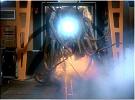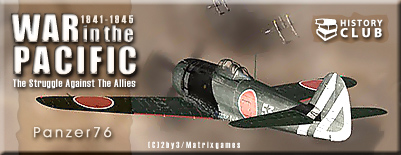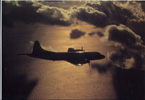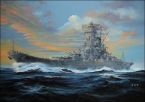Subchaser
Posts: 1201
Joined: 11/15/2002
Status: offline

|
I did a little overview of IJN carrier damage control capabilities… for those who interested… actually only fire-fighting capabilities and equipment… may be I will lift more data later and comment flooding damage part of a puzzle too….
IJN firefighting systems before Midway.
Fire-protection curtains and bulkheads system
All IJN carriers, except Shinano, had enclosed hangars. Hangars were divided by fire-protection curtains and bulkheads, which were supposed to help to localize fires. Those curtains consisted of rock wool with asbestos covering on the sides, bulkheads consisted of 7-10mm armor plates which also were covered with asbestos. The bulkheads were installed on suitable places close to dangerous spaces, bulkheads could be vertically rolled up. They were guided in slots supported from the deck above and from the hangar deck and could be moved across the hangar from one side to the other. This was supposed to be done simultaneously with the bulkhead on the other side of the hangar so they together could form a complete bulkhead. By guiding bulkheads in slots aviation gas was prevented from spreading into adjacent compartments. With electromotor it was possible to close the bulkhead within 25 seconds. Usually there were 4-6 fire-protection deck sections. Both curtains and bulkheads had to be cooled down with water if they should able to fulfill their purposes for any noticeable length of time.
In general, this system was clumsy and unreliable, it could help to resolve a fire incident in port or during air operations, but could hardly help in combat, if in Coral Sea bulkheads and curtains on Shokaku helped to localize fires, at Midway it turned out to be a total failure, explosions destroyed electrics in the key areas and crew failed to manually close bulkheads because of the smoke and high temperature.
Co2 fire-fighting system
It was well-known before the war that water cannot effectively extinguish gasoline fires, especially in closed spaces such as IJN carriers hangars, and Co2 fire-fighting system was developed. Carbon dioxide has greater density than air and thus can smother a fire… theoretically. System was installed on all IJN carriers with exception of Hosho. Installations with Co2 equipment were mounted in the hangars, near aviation gas tanks, gasoline pumps, main gasoline pipetubes conjunction areas and in gas control rooms. This arrangement in principle consisted of Co2 canisters, 30kg each, stowed in several rows in the elevator pits and c&c system with perforated pipes that ran along the underside of the upper hangar deck. There were around 150 canisters in every installation aboard the ship, all parts of the system were connected by control pipes and rods with remote control stations located at the important places. When activated, compressed air operated valves opened one canister row after another in the activated installations, and dioxide reached pipes on the deck and in conjunction gasoline pipetubes areas.
System was thought to be very effective, but in reality also appeared to be a failure. The first problem was control of the functions of the c&c system, sometimes dioxide went out too fast, sometimes did not discharge at all, especially out of the lowest row of canisters. Second problem was extremely complicated remote control system, mishaps often occurred when valves leaked or self-triggered and dioxide suddenly discharged into the hangars. IJN lost quite a number of valuable personnel that way, even when everything was okay it always was unhealthy atmosphere in the hangars, during the warming-up procedures it was real hell and crew was forced to use gas masks. Third problem was the main one, and it was revealed only during combat damages suffered in 1942. Co2 system appeared to be practically useless when gas could stream out thru the vertical side-walls or the deck, pressure difference between burning deck and other compartment made this problem even worse, besides, there were no doubled perforated pipe lines and if the line was broken by the explosion, gas went down, accumulated in the lower compartments and caused numerous suffocation deaths, and it could be not just a needless loss of life, dioxide could kill repair parties below whose work was essential to prevent flooding, thus potentially this could cause a loss of a carrier.
IJN firefighting systems after Midway
Foam fire-fighting systems
Drawbacks of Co2 based systems became obvious after Midway and IJN started development of more effective fire-protection technologies. In august 42 Yokosuka naval arsenal began trials of foamite fire-fighting with installation constructed by Central Japanese chemical industry institute. It was the 1:1 scale copy of Shokaku class second aft hangar, where 2 written-off Kates had been placed, with 1000 gallons of fuel each. When Kates were ignited and foam sprayers started to work it became clear that the system was greatly superior to anything IJN had before. The system was not perfect however, there were problems with spray-width and low pressure. And in september Naval technical research institute had developed advanced version of the foam system. New foam was a mix of sodium bicarbonate, aluminum sulphate and of course… soapy water. It was tested on the same installation and results were very promising. New system had higher spray pressure and a better spray width, it also consumed less foamite. Already in october system was tested aboard Sharnhorst (former german liner later CVE Shinyo), and it proved to be effective again. In early November ’42 Vice admiral Mito commission recommended to install new system on all IJN carriers. On any carrier installed it was capable to produce enough foam to cover 75% of the hangar deck within 5 minutes, number and position of sprayers was different of course. Foam fire-fighting installations aboard the carriers were standardized and owing to the experience gained in Midway battle were introduced as quickly as possible on all remaining carriers and on those under construction. Naval research institute foam system later developed into extremely complicated system with 14 sub-systems, including smoke cooling installations, vacuum blockade system and even old Co2 system that was reworked for protection of enclosed compartments such as ammo storages. So I skip details here. Other critical Midway measures were:
Improved ventilation in low deck compartments.
With the introduction of foam fire-fighting systems some changes were likewise made concerning the ventilation in the engine and boilers rooms as well as arrangements of the emergency exits from those spaces. I must admit that this was not really any fire-protection measures, as one at first would believe, but it was damage control measures which could bring some dividends in combat damage situation.
Hitherto the ingoing air shafts for the engine and boiler room on IJN carriers had always been installed on the side opposite the funnel. Therefore if fire broke out in this area only hot air would be sucked in. Two of IJN carriers lost at Midway were badly damaged on the side where ventilation system was installed. Thereby not only hot air entered engine and boilers room but fire as well and the majority of the machinery personnel were suffocated since there were no emergency exits. In order to avoid such hassle it was made possible to switch the ingoing air from damaged side to undamaged. Consequently the ventilation system was changed so that ingoing air to engine/boilers rooms could be entered from both sides.
Improvement of hangar ventilation.
When enclosed space the size of a carrier hangar is filled with gasoline vapor, a fire will result and vapor will explode, and it will be catastrophically powerful explosion, ton of TNT equivalent. This happened to Lexington in 1942, carrier had well developed fire-fighting system but it did not help to prevent vapor explosion. IJN carriers at Midway also suffered heavily from gasoline vapor explosions. In order to avoid this accumulation of gasoline vapor the capacity of hangar ventilation was dramatically increased on all carriers in 1943-44. This was carried out by the following measures: increase of the number of fans, so that complete renewal of the air could be made at least 12 times per hour; arrangement for openings in the forward and aft sides of the hangar, so it would be possible to refresh air thanks to the speed of the ship; erection of a surface exposed to the wind made of canvas in front of the forward elevator so that the hangars could be ventilated via the elevator pit. However…all those measures did not provide IJN with 100% guarantee against the vapor explosions, Taiho is the best example.
Fire-retardant paint
The oil paint, which was used on IJN carriers prior 1943, contributed both to intensity and endurance of the fire. Because of this it was desirable to replace this paint with flameproof paint. Naval research institute tried several commercial examples but they turned out to be as flammable as any other paints. On the contrary experiments with proceeded favorably with the paint that had been used to cover the bulkheads of feed water tanks. It was “metal concrete” paint that prevented water penetration. The main ingredients were zinc (60%) and sodium silicate, later when zinc became deficient material, percentage dropped to 45%. Imagine the amount of paint needed to cover Shinano’s inner surfaces. New paint proved to be effective measure, it did not burn at all. Aboard the carriers completed in 1944 this paint was used at once and on the older carriers the oil-paint had to be scrapped off before the new paint could be applied. No yard was available for this job in 1944 and this had to be performed by the crews and they did the job as they returned from the operational areas.
Fire-protection measures in the crew compartments.
Before Midway battle fire protection measures within the crew spaces on IJN carriers consisted of fire retardant doors and non-combustible materials. Coral Sea and Midway showed that these measures were insufficient and it was necessary to do more. The views varied how this should be done from ship to ship. On Junyo, for example, whose equipment to a great extent originated from her basic design as a passenger ship some measures had already been taken before her commission. In general, measures were – wood panels were removed and linoleum covers had been pulled up (even in officers quarters, bridge and companies), cosmetic paints scrapped off everywhere, only sinto chapel compartments were left untouched, all furniture was thrown away, crew slept on canvas or carpets.
Damage control organization.
Officially it was the captain who was responsible for damage control aboard a carrier. However, in reality it always was second-in-command- commander (Fukucho) who performed this duty. After Midway battle damage control organization was slightly changed and the new post was introduced – Naimucho (usually translated as general affairs officers, don’t know why), officer responsible for damage control operations, it was supposed that new officers would recieve special training and would be able to perform their duties on a higher level, but only Shokaku, Taiho and Shinano had those officers and I suspect that they did not receive any additional training, there was the serious shortage of qualified personnel in any IJN branch at that time. So, as you can guess, many of the carriers listed in the posts above were victims of “wrong button” phenomena. Early in the war all Japanese problems were that way or another connected with poorly designed hardware, while seamen had adequate training, I can’t say that it was comparable to the training that USN skippers were getting but it wasn’t dramatically worse anyway.
After the Philippine sea battle damage control equipment and techniques were further improved. That all pushed IJN DC techniques to higher levels but… unfortunately, by that time not too many IJN carriers, were still in existence.
Ideally, I think, ability of a ship to survive battle damage should be connected to the crew experience (third line, day/night/damage control rating), and class/type of a ship… I hope it will be so in WitPII, in the game as it is now, I don’t know how anything can be improved without radical innovations here, unfortunately this is something we cannot hope for....
_____________________________
|
 Printable Version
Printable Version





























 New Messages
New Messages No New Messages
No New Messages Hot Topic w/ New Messages
Hot Topic w/ New Messages Hot Topic w/o New Messages
Hot Topic w/o New Messages Locked w/ New Messages
Locked w/ New Messages Locked w/o New Messages
Locked w/o New Messages Post New Thread
Post New Thread